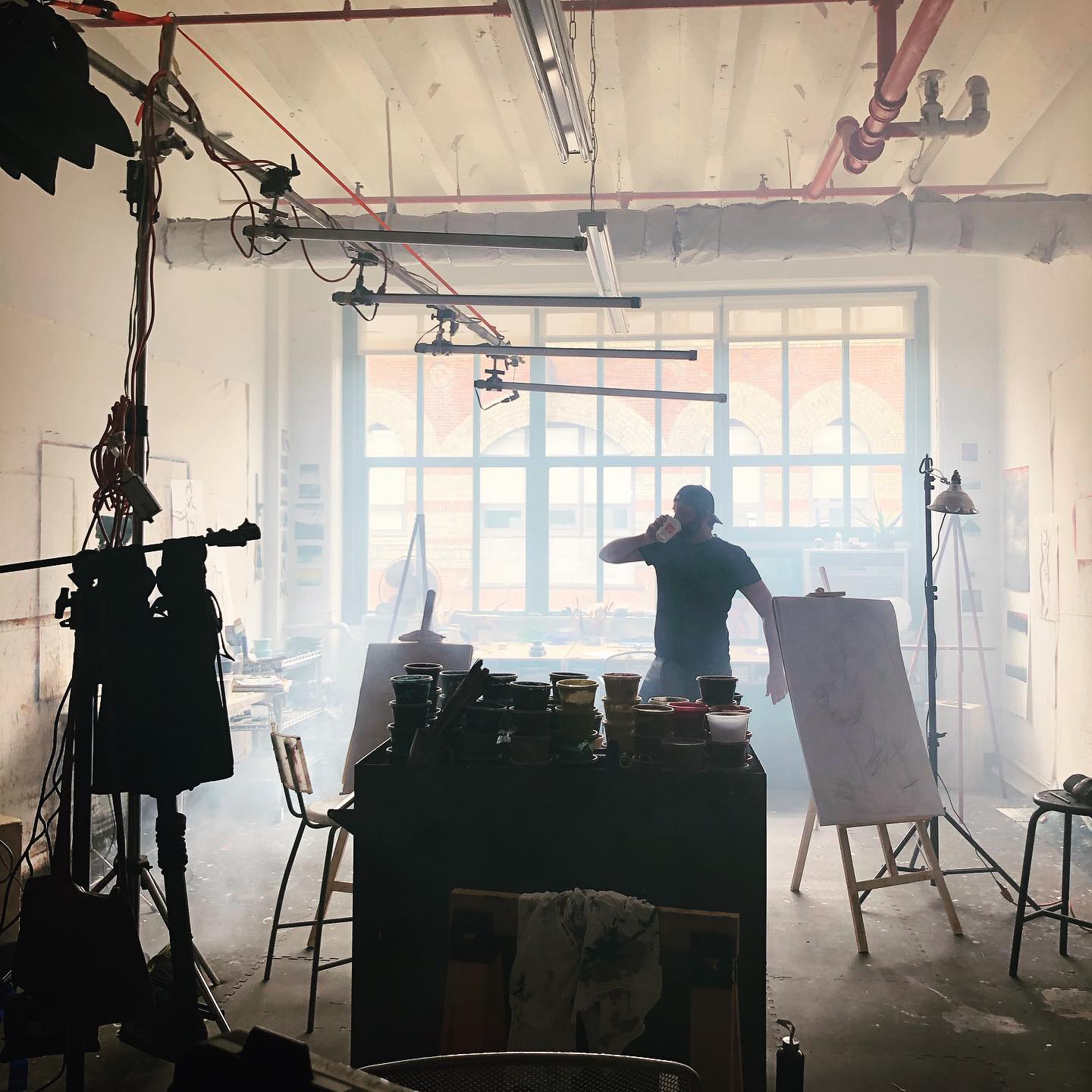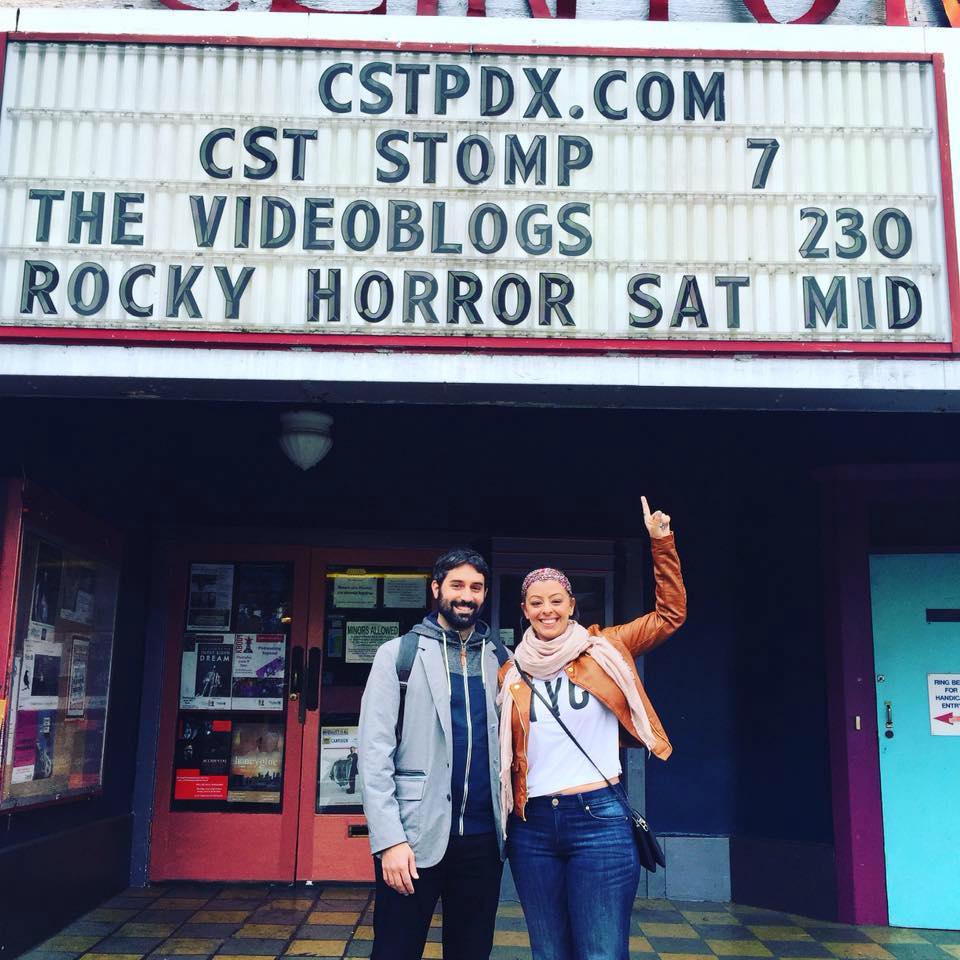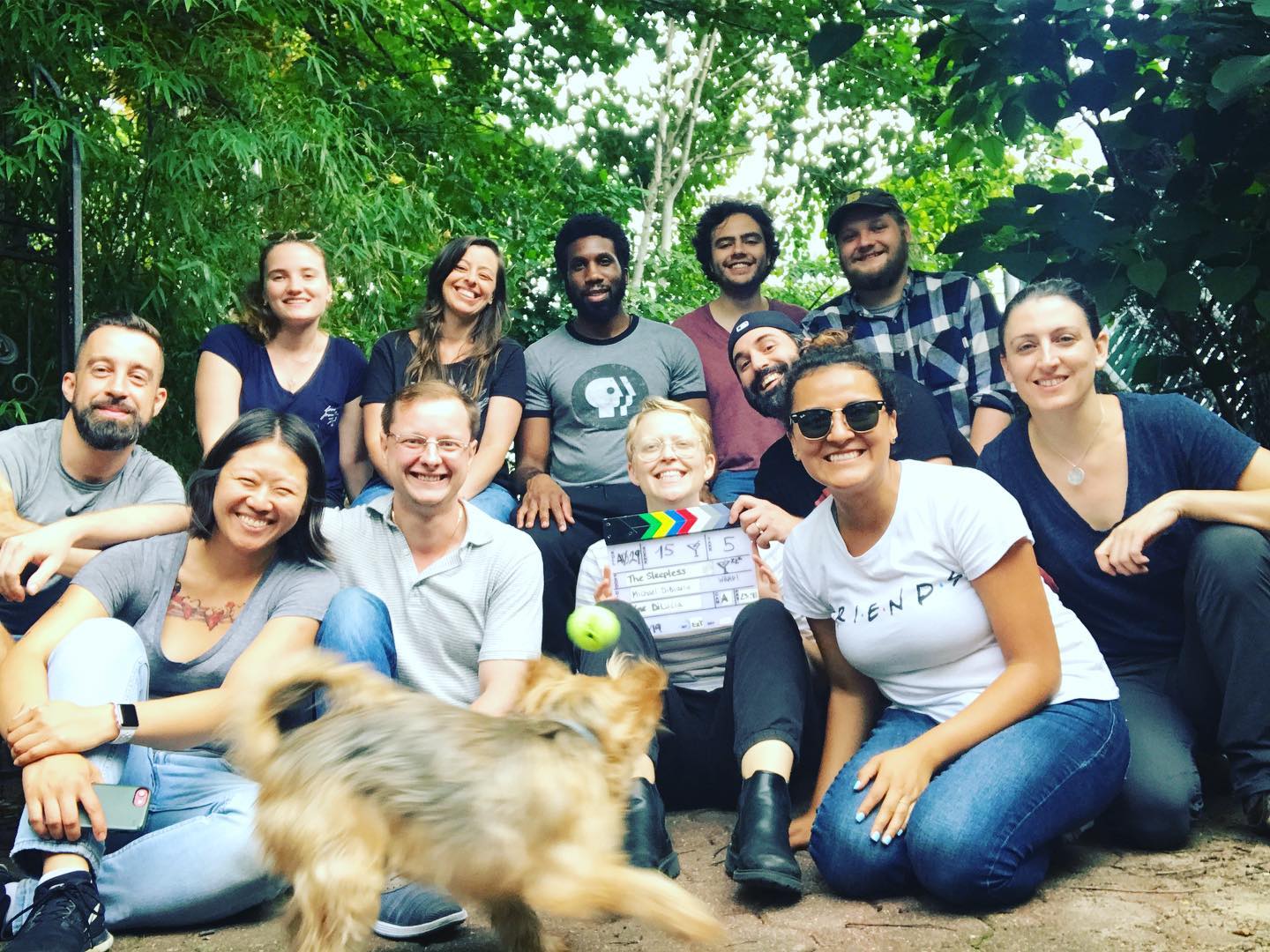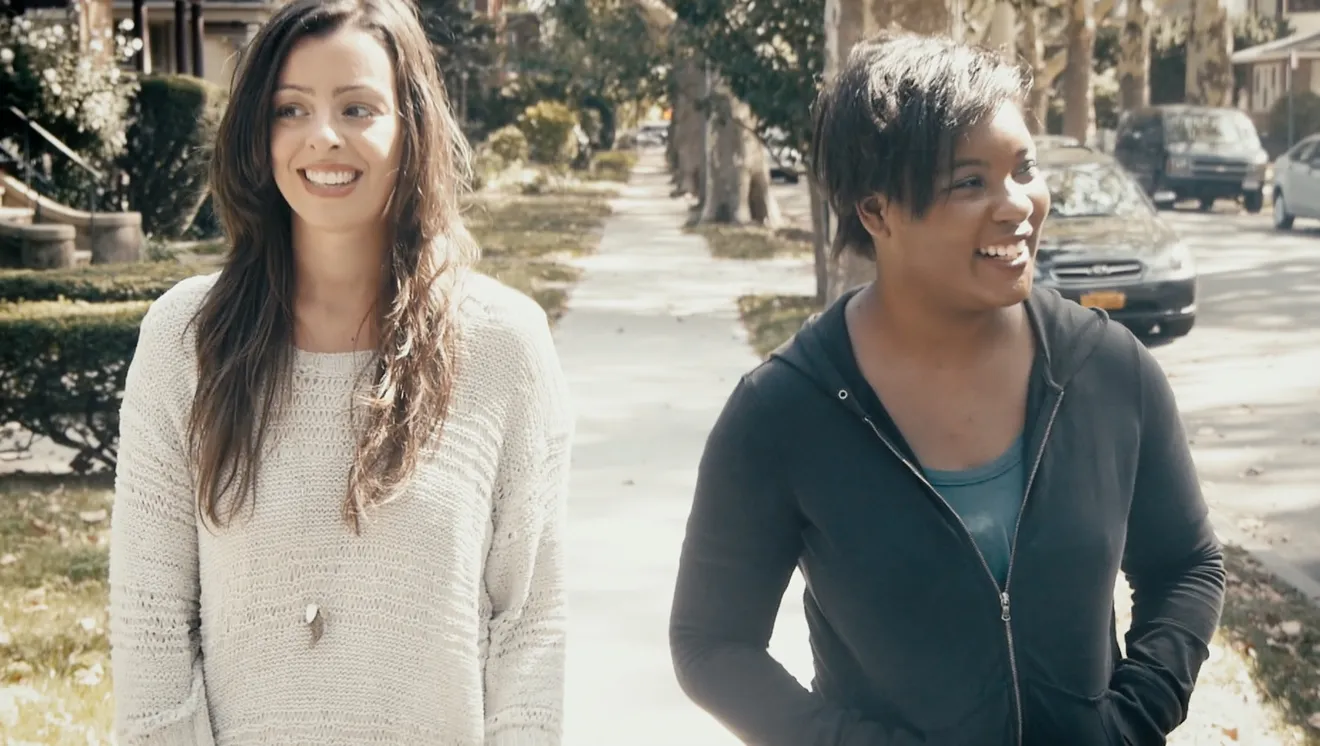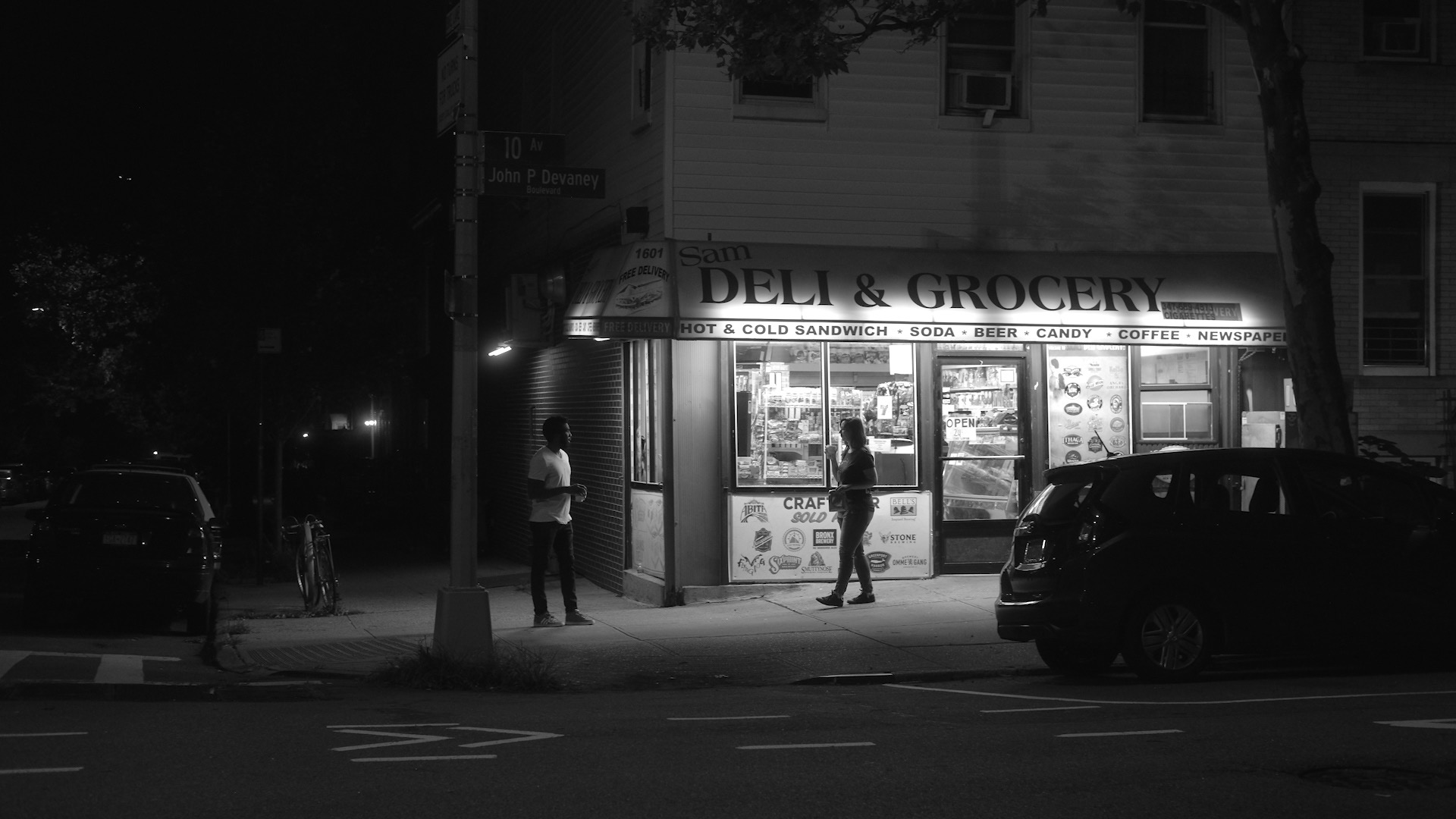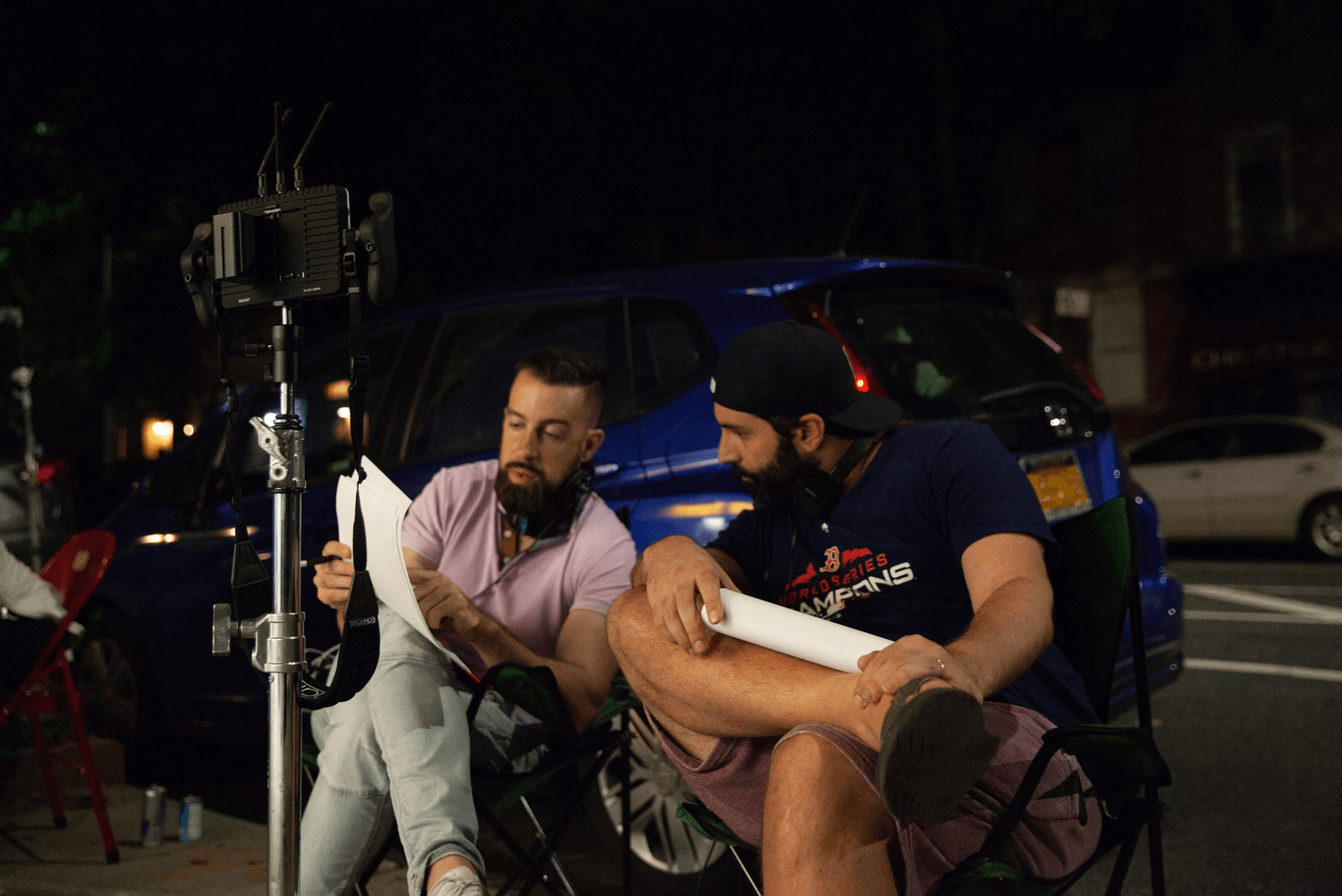We recently connected with Michael DiBiasio-Ornelas and have shared our conversation below.
Michael, looking forward to hearing all of your stories today. Can you open up about a risk you’ve taken – what it was like taking that risk, why you took the risk and how it turned out?
As an independent filmmaker, every larger project I’ve taken on has been a big risk. My wife and I started as two working-class creatives building what we could with what we had (or felt we could get). From my earliest days as a self-taught filmmaker obsessed with the craft, I’ve kind of lived alongside risk as a general rule. It’s been a blast.
When friends were taking high-paying jobs out of college, I started working in a manageable 9-5 marketing job, where I could spend my early mornings, lunch breaks, and evenings bootstrapping a series of increasingly larger and longer films. That culminated in taking a half-sabbatical to shoot our second feature, The Sleepless, within an eight-day shoot on the streets of Brooklyn (often in the middle of the night). It was an arthouse walk and talk, shot in black and white, that we decided to make after a larger and related romantic comedy languished in development for years. Most would call the size, style, and production of that film risky. We had an amazing time and are so proud of it.
Then there was the bigger risk of leaving that job, after 15 years, during the height of the pandemic. We moved from NYC to VT to raise our daughter (we now have two daughters) but remained committed to making films. It was a rough few years adjusting to parenthood and a new home state, and life as a freelance marketing consultant. At one point around that time I had a stable part-time job writing for a good-sized marketing agency, but left again when we got our next film, The Yorkie Werewolf, funded.
That film came out in January 2025 and people are watching it, but with the addition of our second child in the middle of finishing it, and all sorts of other challenges, it has also remained a risk for most of the past few years. It’s a weird movie, and a huge departure from our last two features (minus an experimental comedy shot on Zoom during lockdowns). It’s also generating the largest response we’ve had to date. So perhaps that risk is working out well.
Basically, it’s a living risk being an indie filmmaker. More so as a father of two young children. I’m slowing things down at the moment to finish a paid script commission and to review some options to reset, but I think the risk will always be there. It’s most important for me to take care of my girls, but to do that fully I need to keep staying true to myself. So we’ll see how risky the future looks. Hollywood hasn’t been faring much better lately, and at least we own the rights to all our movies and have almost complete control over them, other than a few licensing deals that will eventually expire.
Michael, love having you share your insights with us. Before we ask you more questions, maybe you can take a moment to introduce yourself to our readers who might have missed our earlier conversations?
I’m a multifaceted creative that has stumbled into most of what I do today, other than having identified as a writer for essentially my entire life. I started as a fiction writer, and really doubled down on that in college, where I was published for the first time. That short story (and a lot of my other work) was described as cinematic by several peers and professors, and one day I mentioned that fact to an alum of my college and fraternity who was an independent filmmaker. He offered to loan me his equipment if I ever wanted to adapt that short story into a film.
That’s what I ended up doing next, over the course of many months. Took a screenwriting course, got the script working, enlisted clueless friends to help my clueless self to make a 15-min neo-noir short film. Between some natural ability, the dedication of those friends, the alum and his producing partner, the internet, and a book about “how to make a short film” — we pulled it off. I caught the bug from there, and continued learning through trial and error. When I met my wife Rebecca, an incredibly talented and well-trained actor, things really started to take off in terms of growing to where we are today — as filmmakers who somehow are still getting things made nearly twenty years later.
Along the way, I transitioned from a day job in video marketing, to freelancing as a wider marketing consultant, to running marketing at a few startups, to where I am today, which is leading creative for a fast-growing marketing agency that works with some of today’s biggest and most exciting new AI and tech companies. I wouldn’t have a marketing career without film, or a film career without marketing, because I learned how to raise money one-audience member at a time, up to and including beginning to eventually work with equity investors after proving myself as a filmmaker. With The Yorkie Werewolf out this year, I’m focusing more of my time on learning new and deeper creative modes, such as using AI responsibly to accomplish more and better things. And I’m writing a few things for pay and for myself, to perhaps shoot in another year. I never gave up fiction, either, publishing my first book a few years ago. Writing that was a life-changing process. That’s called Cessation and is available through Amazon, Barnes&Noble, and elsewhere. It’s bit of a heavy read about the trappings of modern capitalism. I’m starting to feel itchy to write another book, if or when my brain can handle that.
My life hasn’t been boring!
Learning and unlearning are both critical parts of growth – can you share a story of a time when you had to unlearn a lesson?
Despite my best efforts, I’ve incrementally struggled over the years to stay open to and focused on the stories my heart most needs to tell. At the same time — and this may come off counterintuitive — I’ve learned to realize that this doesn’t always have to mean telling the story that is most serious.
I think the films I’ve ended up making, and the jobs and clients I’ve ended up enjoying most, all have one thing in common. They just sort of manifested naturally, when I finally relaxed and let go of trying to control outcomes. I think it’s important to head off in particular directions, and to track progress and to self-reflect, but after that I think our actions are best directed by whatever is going on in our subconscious minds or out there in the ether.
For example, my filmography is a journey in genre-hopping. Started with crime dramas, moved on to intimate mental-health themed dramas, then to romantic comedy, then to comedy, then to comedy/horror. Every film is an expression of my POV and tells a story I needed to tell. It was weird coming to terms with that with The Yorkie Werewolf, for sure. But I wouldn’t go back and change anything. They’re all part of my journey and what I needed to do at the time to connect with others.
What do you find most rewarding about being a creative?
It’s the person in the audience, whether actually in-person or in an online comment or review, who just got what we were going for — and seemed to have gotten something out of what we made. I think I became a filmmaker, and even a marketer, to secure a balance between two disparate sides of me. I can’t imagine only writing or trying to connect through that medium in solitude. I can’t imagine only directing or producing films, without that time spent alone chasing the essence of a story, before collaborating deeply with cast and crew.
Connecting with others through art is a privilege, and to me a responsibility and a calling. We perform a crucial service to society, in telling stories meant to bridge those divides (real and imagined) that exist or that are instilled in our hearts by outside forces aiming to smother those lived experiences with malicious narratives.
And I’m going to cheat now and mention something else that’s the most rewarding part of filmmaking. Being on set with your cast and crew is the single best feeling in the world to me, other than moments with my children and family. When the clock is ticking and money is being spent and people are working together to do their best to capture some semblance (or interpretation) of reality — that’s living.
Contact Info:
- Instagram: https://www.instagram.com/michaeldibiasio/
- Linkedin: https://www.linkedin.com/in/michael-dibiasio-ornelas-42b62671/

